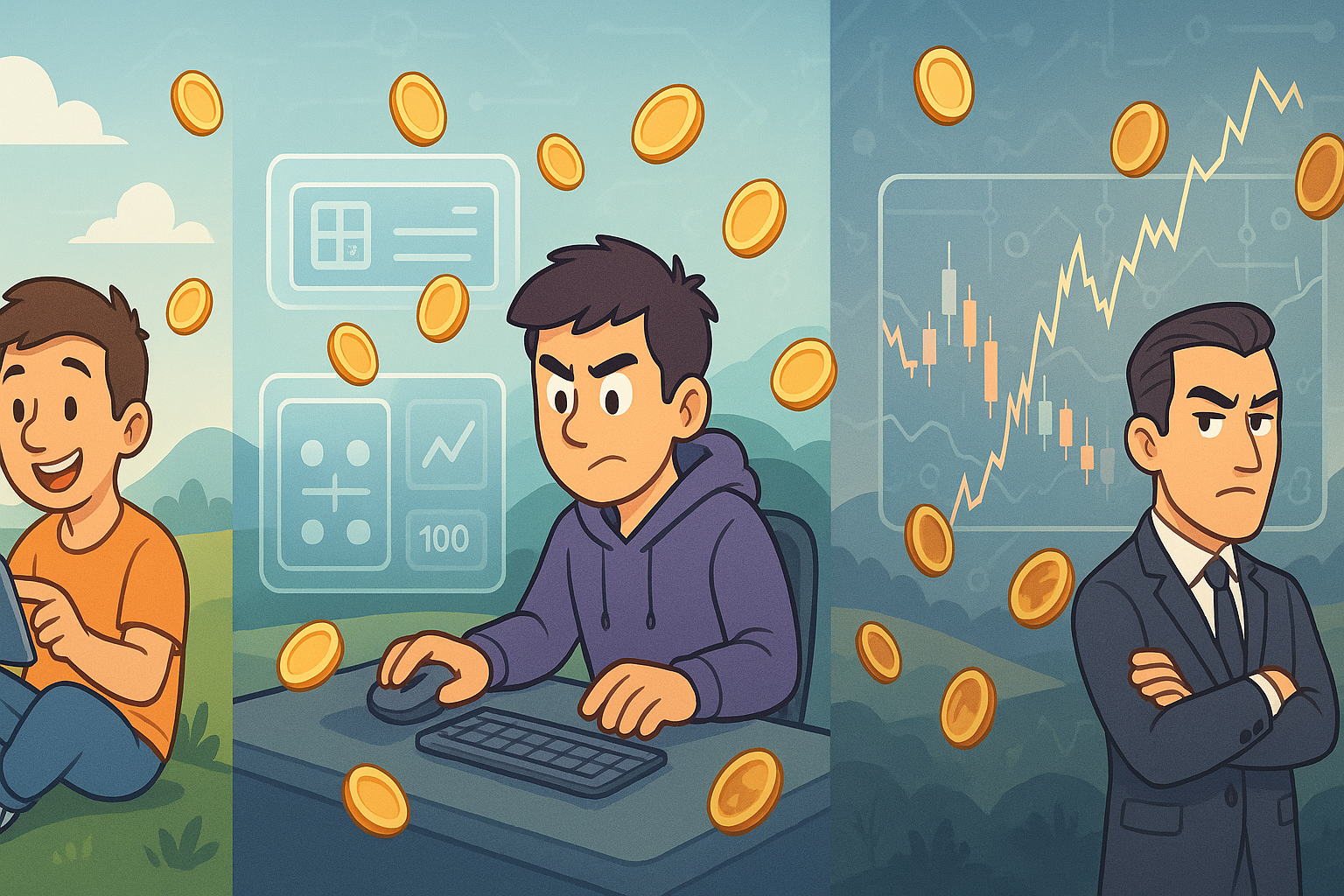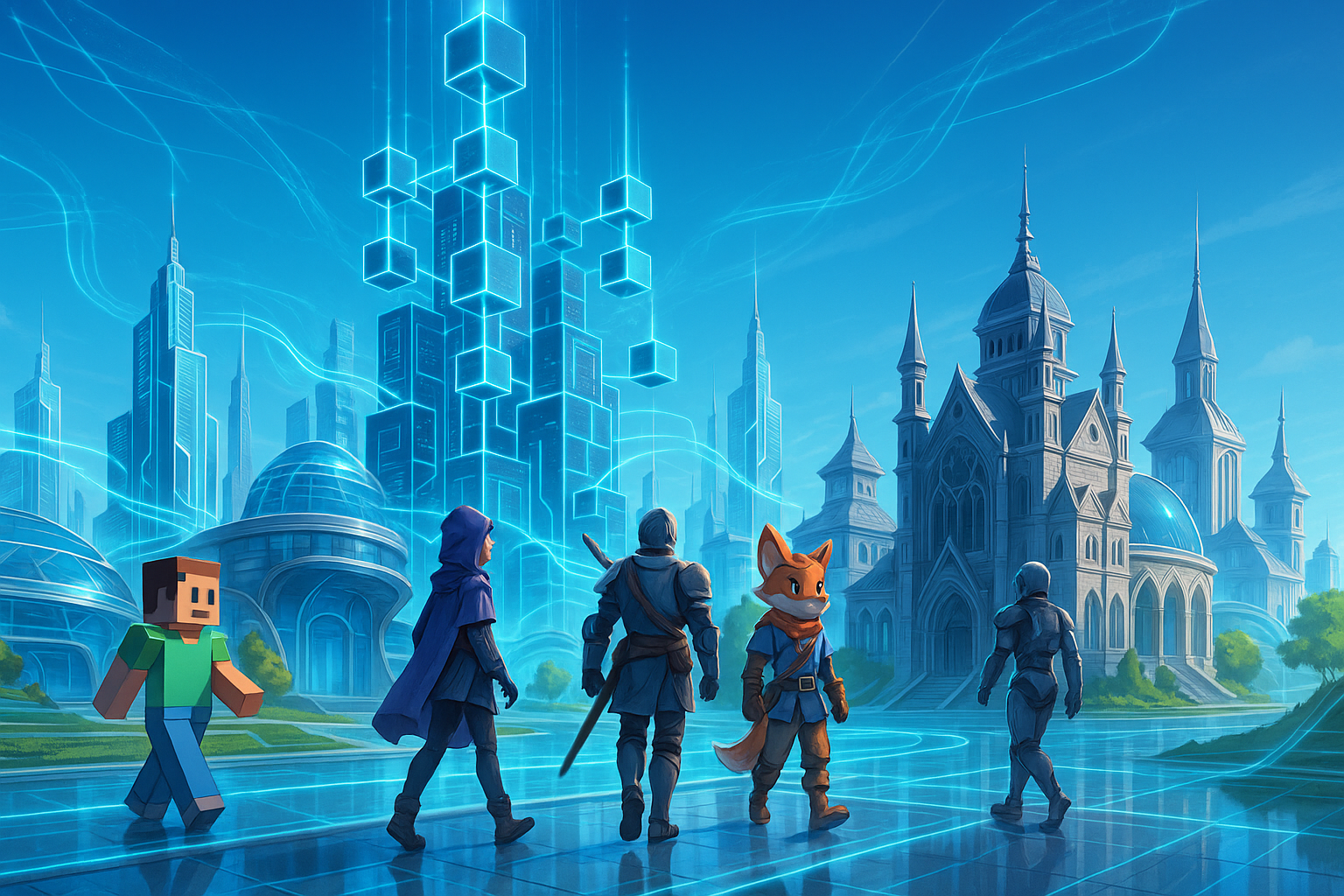Beyond the Hype: Realistic Earnings in the P2E Gaming World
The promise of Play-to-Earn (P2E) gaming captivated millions, painting a picture where your gaming prowess could translate directly into real-world income. For a while, the headlines buzzed with stories of players earning life-changing sums, especially during the peak of the crypto bull market. But as the dust settles and the hype cycles mature, a crucial question emerges for anyone considering diving into this digital frontier: How much can you realistically earn with P2E games today? The answer, as with many things in the burgeoning Web3 space, is complex, nuanced, and far removed from the "get rich quick" narratives that once dominated the conversation.
The Evolution of P2E
The early days of P2E were marked by exponential growth and speculative fervor. Games like Axie Infinity soared, demonstrating the potential for blockchain technology to empower players with true ownership of in-game assets and the ability to monetize their time and skill. This era, however, also highlighted significant challenges. Many early P2E economies were unsustainable, often relying on a continuous influx of new players to prop up token prices, leading to hyperinflation and eventual crashes when growth stagnated. The focus was heavily on the "earn" aspect, sometimes at the expense of genuine "play" – leading to games that felt more like work than entertainment.
Today, the landscape is evolving. Developers are learning from past mistakes, shifting towards models that prioritize engaging gameplay, robust tokenomics, and long-term sustainability. The narrative is moving from pure "play-to-earn" to "play-and-own" or "play-and-earn," emphasizing fun and ownership while offering earning opportunities as a bonus, rather than the sole driver.

Factors Influencing Realistic Earnings
Several critical factors determine the earning potential within any P2E ecosystem:
1. Game Mechanics and Tokenomics
This is arguably the most crucial element. A well-designed P2E game will feature balanced tokenomics that manage inflation, provide utility for its native tokens, and create sustainable demand. If the in-game economy relies solely on new players buying tokens, it's a ticking time bomb. Games with strong burning mechanisms, diverse utility for tokens (e.g., crafting, upgrading, governance), and a clear roadmap for economic growth are more likely to offer sustained earning potential. The fundamental design of the game – whether it requires skill, strategy, or just time – also dictates how rewards are distributed and earned.
2. Player Skill and Time Commitment
Just like traditional competitive gaming, skill plays a role. In strategy-heavy or competitive P2E games, top players will naturally earn more. Furthermore, the amount of time you dedicate directly correlates with potential earnings. Some games require daily grinding to maximize returns, while others might offer more passive income through asset ownership or staking. It's essential to match your available time and skill level with the game's demands.
3. Market Conditions and Token Volatility
P2E earnings are inherently linked to the broader cryptocurrency market. The value of in-game tokens and NFTs can fluctuate wildly based on market sentiment, overall crypto trends, and the specific game's popularity. A token that was worth a significant sum yesterday might be worth a fraction of that today. This volatility means that what you "earn" in-game might change drastically in real-world fiat value by the time you convert it.

4. Initial Investment
Many P2E games require an upfront investment, typically in the form of purchasing NFTs (characters, land, items) to get started. This investment can range from a few dollars to hundreds or even thousands. The size of your initial investment can directly impact your earning potential, as more valuable or powerful assets often lead to higher rewards. However, this also introduces risk – the value of your initial investment can depreciate significantly if the game loses popularity or its tokenomics falter.
5. Community and Developer Support
A thriving and engaged community, coupled with a transparent and responsive development team, are strong indicators of a game's long-term viability. Games that continuously update, introduce new features, and listen to player feedback are more likely to retain players and maintain a healthy ecosystem, indirectly supporting earning potential.
Types of Realistic Earnings
Earning in P2E games isn't a monolithic concept; it manifests in several forms:
- Fungible Tokens: These are the primary in-game currencies that players earn through gameplay, quests, or participation. Their value is tied to the game's economy and broader crypto market. They can be used within the game or sold on exchanges.
- Non-Fungible Tokens (NFTs): Players can earn or craft unique NFTs like characters, skins, virtual land, weapons, or other digital collectibles. These NFTs can often be upgraded or used in-game to enhance earning potential, and then sold to other players on secondary marketplaces. Their value is subjective and driven by demand, utility, and rarity.
- Staking Rewards: Some games allow players to stake their game tokens or NFTs to earn additional rewards, often more tokens or governance rights. This can be a more passive form of income but locks up your assets.
- Scholarship Programs: A popular model where asset owners lend their NFTs to new players (scholars) who then play the game and split the earnings. This lowers the barrier to entry for new players while allowing asset owners to maximize their investment without active gameplay.
What Does "Realistic" Look Like Today?
For the vast majority of P2E players, earnings are unlikely to replace a full-time income, especially without significant initial investment and time commitment.
- Hobbyist/Casual Player: Expect to earn supplementary income, perhaps enough to cover the cost of the game itself, or a small profit. This might range from a few dollars to tens of dollars a month, highly dependent on the game and market conditions. The primary focus here should be enjoyment.
- Dedicated Player (Low Investment): With more time and focused effort, and a modest initial investment, one might aim for a few hundred dollars a month in a well-performing game. This requires strategic play, understanding market cycles, and potentially juggling multiple games.
- High-Roller/Serious Investor: Players willing to commit significant capital (thousands of dollars) to acquire rare NFTs or large token holdings, and who dedicate substantial time, might see higher returns. However, this segment also faces the highest risk due to the potential depreciation of high-value assets and the volatility of the market. These players often operate like professional investors, constantly researching, managing portfolios, and actively participating in game governance.
It's crucial to understand that many games offering high initial returns often fall into the trap of unsustainable economics. Sustainable games might offer slower, steadier, but ultimately more reliable, smaller returns over time.

Strategies for a More Realistic Approach:
- Do Your Own Research (DYOR): Before investing time or money, thoroughly investigate the game's whitepaper, tokenomics, team, community, and roadmap. Look for transparency and a clear vision for long-term sustainability.
- Prioritize Fun and Engagement: Treat P2E games as games first. If you genuinely enjoy playing, the "earn" aspect becomes a bonus, and you're more likely to stick with it through market fluctuations.
- Start Small: Don't put all your eggs in one basket. Begin with a modest investment you're comfortable losing, or explore free-to-play earning opportunities if available.
- Diversify: Just like traditional investing, diversifying your P2E portfolio across different games and types of assets can mitigate risk.
- Understand the Risks: Be fully aware that P2E games are speculative, volatile, and can result in significant financial losses. The value of in-game assets and tokens is not guaranteed.
- Stay Informed: The Web3 space moves quickly. Keep up-to-date with game updates, market trends, and community discussions.
The Future of P2E:
The future of P2E likely lies in creating truly engaging games that happen to leverage blockchain for player ownership and economic opportunities, rather than being built purely around earning mechanics. Expect to see:
- Higher Quality Games: As technology matures, games will become more sophisticated and enjoyable, attracting a broader audience beyond crypto enthusiasts.
- Sustainable Economic Models: Developers are learning to implement more robust tokenomics, often integrating multiple tokens, burning mechanisms, and real-world utility.
- Interoperability: The vision of assets being transferable between different games and metaverses could unlock new levels of utility and value.
- Regulatory Clarity: As the space matures, clearer regulations might emerge, providing more stability and consumer protection.

Conclusion:
While the dream of earning a fortune playing video games is a compelling one, the reality of P2E today is far more grounded. It's a nascent industry still finding its footing, characterized by both incredible innovation and significant risks. For most players, P2E offers the potential for supplementary income, a chance to truly own their digital assets, and to be part of a pioneering technological shift. Approach P2E with realistic expectations, a healthy dose of skepticism, and a primary focus on the "play" aspect. The most successful P2E ventures will likely be those that entertain first, and reward second, fostering a community of engaged players who are passionate about the game itself, not just its potential payout.

